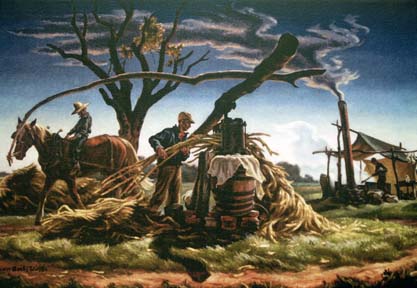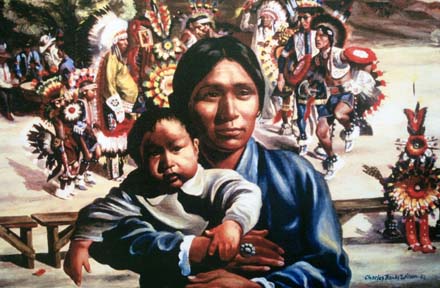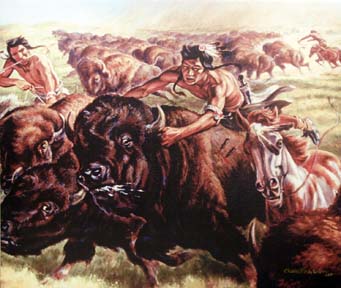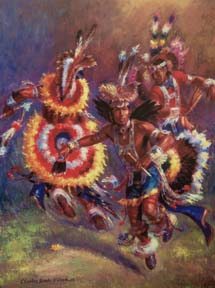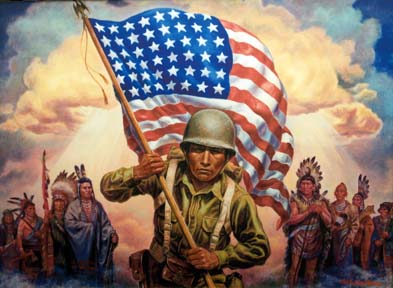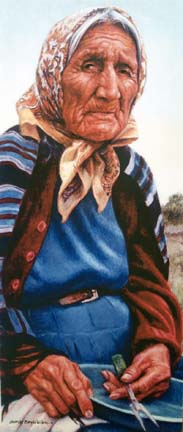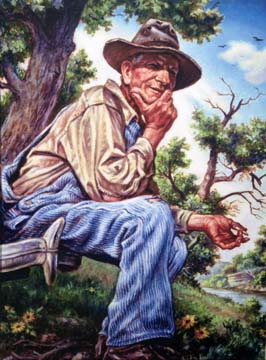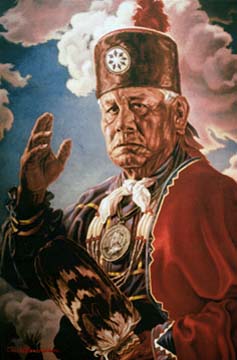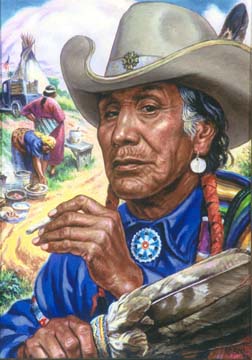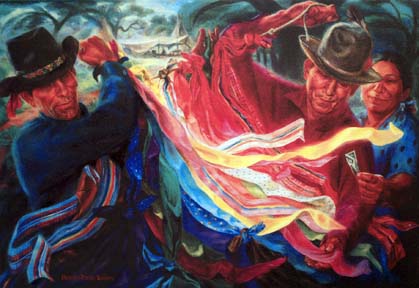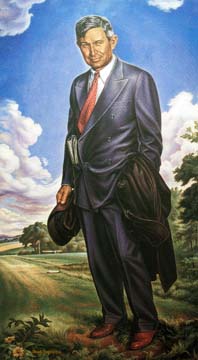Celebrating Native America by Charles Banks Wilson
Charles Banks Wilson realized his life's obsession as an artist at an early age--to reflect his time and place.
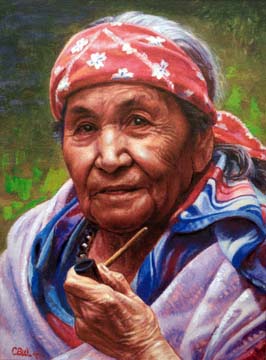
But Wilson never realized when growing up in Miami, Oklahoma, that recording his time and place included painting Native American Indians until 1936, his first year as a student at the Art Institute of Chicago. There, his fellow schoolmates plied him with questions about Oklahoma "redmen." Inspired by their curiosity, Wilson began sketching and painting Native Americans during his summers home from school. Wilson says, "I was seeing a transition from primitive man to sophisticated man, and I was in the right place and time to record it."
And record it he did, as evidenced in works depicting traditional Native America like "Medicine Singers," "Birthright," and "The Ribbon Bets." But he also recorded images that were surprising to his Chicago peers, images that depicted individuals as they truly were. Images such as "Cherokee Matriarch," "Katie 'Osage' Cheyenne," and "Osage Orator" reveal Native Americans caught in the transition between native and white America. Wilson says this transition "was not a popular theme in anyone's opinion" because "Americans wanted the Indian to remain a nostalgic keepsake, committed forever to chasing the buffalo across the boundless prairies." Wilson admits he was a bit baffled when people asked him "why I was making social comments." He says simply, "I was just painting what my eyes saw."
Some of the images in the exhibit are examples of artwork created for the twenty-eight books Wilson illustrated during his career, such as "Brave" and "Making Sorghum." Other paintings, such as "Freedom's Warrior," tell a story in themselves. The original lithograph was created as propaganda in 1941 when Wilson was working for the Office of War Information. It depicts a Native American soldier holding the American flag aloft, while ranged behind him are great chiefs who organized armed resistance against invading white settlers or armies--Chief Joseph, Sitting Bull, Tecumseh, Geronimo, Powhatan, Black Hawk, Pontiac, and Osceola. Charles Chibitty, who was a World War II Comanche "code talker," modeled for the central image of the American soldier. The irony is thick, but here the transition to white America is complete.
Wilson's self-appointed task of sketching the faces of individuals of a single tribal heritage resulted in images of more than one hundred individuals from sixty-five tribes. That fifty-year long quest is recorded in Wilson's book "Search for the Native American Purebloods,"(1983) now in its 3rd edition from the University of Oklahoma Press. To honor his promise to his Native American models that he would never sell their images, Wilson donated the collection of originals to the Gilcrease Museum in Tulsa, Oklahoma. In return, the Gilcrease established an internship in the museum for students of Native American ancestry in Wilson's name.
Wilson was commissioned to paint portraits of Will Rogers, Sequoyah, Robert Kerry, Jim Thorpe, Woody Guthrie and four murals of state history for the Oklahoma state capitol rotunda. He is a Fellow of the International Institute of Arts and Letters of Geneva, Switzerland; a member of the Oklahoma Hall of Fame, and a recipient of the Western Heritage Award from the Cowboy Hall of Fame. He was named an Oklahoma Treasure by the Governor's Arts Awards in 2001. He still paints every day. "Celebrating Native America" will be on display in the main lobby area in Mullins Library through the end of December. For more information, call 479-575-6702.
Find more information at http://libraries.uark.edu/info/artexhibit.asp#celebrating.
(Click thumbnail image to enlarge.)

